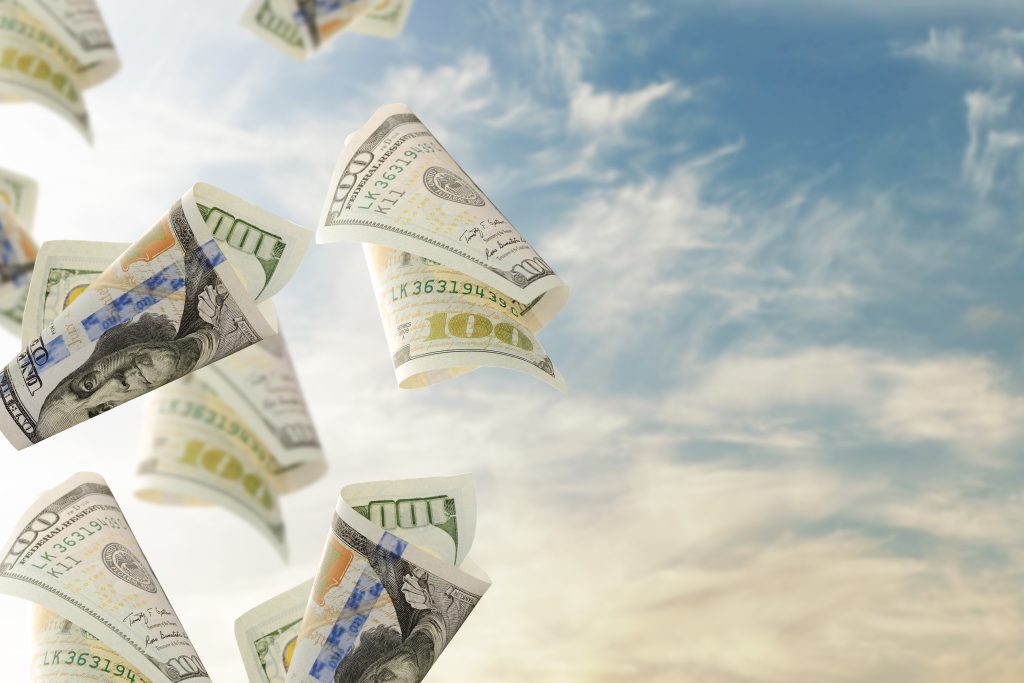As digital wallets and contactless payments become more popular, cash is becoming less common in everyday transactions. Younger consumers, especially, have grown up in a landscape where carrying cash is optional, and this generational shift is driving us closer to the concept of a cashless society.
But it won’t happen anytime soon.
There are more than 50 billion pieces of paper money in circulation in the United States, including more than 14 billion one-dollar bills. While cash isn’t disappearing entirely, data from Marqeta shows that both consumer attitudes and habits are shifting towards a less cash-dependent economy.
According to Marqeta’s 2024 State of Payments Report, nearly three-quarters of U.S. consumers aren’t concerned about moving towards a cashless society. In fact, more than a quarter of respondents said it feels awkward to pay with cash, with nearly half of those ages 18 to 34 expressing this sentiment.
Although cash is still in use—60% of consumers reported using it in the past week—almost a third of those surveyed said they’re using cash less frequently than they did a year ago.
Physical Wallets? Not in a Cashless Society
This shift towards contactless payments is evident, as many consumers are increasingly comfortable leaving their wallets at home. Two-thirds of younger consumers report feeling confident doing so, and more than half are automatically adding new credit or debit cards to their mobile wallets.
Digital wallets are not just replacing cash; they are also becoming a repository for ID cards, insurance cards, and driver’s licenses. This expanded functionality suggests a future where mobile devices could replace everything that traditionally fits in a handbag or back pocket.
However, Marqeta’s research indicates that, to date, most people are only adding a single debit or credit card to their mobile wallets. This presents a strong market opportunity for financial institutions to expand their digital payment offerings.
Room for More Contactless Payments
On a global scale, the U.S. lags behind other countries in adopting contactless payments. Less than half of U.S. respondents reported using some form of contactless payments in the past week, compared to 80% in the UK and 69% in Australia.
The rise of biometric technology is expected to accelerate the adoption of contactless payments. By making payment processes easier and more secure, biometric identification is likely to appeal to both consumers and merchants.
“Biometrics are flexible and adaptable to various in-store experiences,” Dennis Gamiello, Executive Vice President of Identity Products & Innovation at Mastercard, told PaymentsJournal. “For example, biometrics can play a more traditional role in the in-store checkout journey, replacing physical cards at checkout, all the way up to more autonomous shopping experiences.”
P2P Replaces Cash
In contrast to the slower adoption of contactless payments, the U.S. leads other markets in the use of peer-to-peer payment apps. More than three-quarters of consumers have used a P2P payment app, surpassing usage rates in both Australia and the UK. Most of these user reported that their usage increased or remained steady over the past two years.
The growing popularity of P2P payments underscores the shift away from cash, even in informal transactions.
Earlier this year, Jordan Hirschfield, Director of Prepaid at Javelin Strategy & Research told PaymentsJournal that consumers have adopted P2P into their daily payments routines, especially as a quick method to pay friends and family easily in place of cash. “The continued efforts to reduce and mitigate fraud and theft through P2P will enable next generation growth,” he said. “This includes allowing P2P to function as a trusted alternative at point-of-sale to benefit both consumers and merchants.”
Additionally, U.S. consumers are more open than their counterparts to moving their finances to digital-only banks. More than a quarter either consider it or have already done so. This trend highlights a willingness to move beyond traditional banking.
Sophia Gonzalez, Analyst, Debit Payments at Javelin Strategy & Research, agrees that the U.S. is well-positioned to go totally cashless.
“Cashless payments have proven to be more convenient, reduce certain types of crime, and simplify accounting processes,” she wrote in an article for PaymentsJournal. “The transition towards a cashless society is inevitable.”
